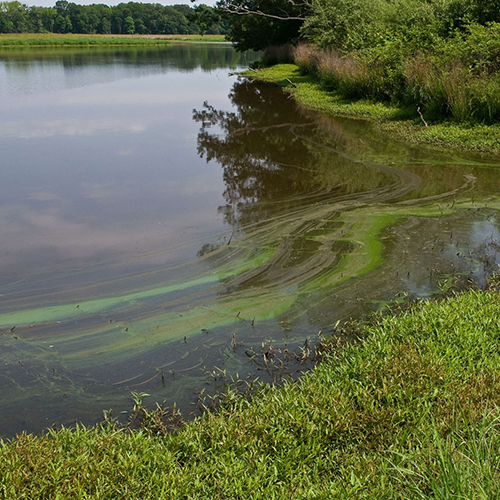May 9, 2023
Warmer Weather Brings Harmful Algal Blooms

Spring brings warmer weather and increased sunlight that causes blue-green algae in waterbodies to grow rapidly, leading to the development of toxin-producing cyanobacterial harmful algal blooms, commonly known as CyanoHABs or HABs. This season also brings rain and runoff, which can carry nutrients such as nitrogen and phosphorus into bodies of water, further fueling algal growth. As a result, HABs tend to be more common during the spring and summer months. It's important to be aware of the potential for HABs during this time and take measures to prevent exposure.
The biggest risk to health comes from contact with or ingestion of toxins produced by cyanobacteria and blue-green algae. This can occur during activities that bring humans or animals into contact with the toxic water or from inhaling spray cast up from the water's surface. Children and pets are most at risk and can become ill after being exposed. Adults with compromised immune systems are also more susceptible to illness from exposure. The most common complaints include vomiting, diarrhea, skin rashes, eye irritation and respiratory symptoms.
K-State’s Pollution Prevention Institute has created a helpful ‘Who to Call?’ list with contact information for water testing, reporting blooms and treating exposure to HABs.
When in doubt, stay out! The greener the water, the more likely it is that it is dominated by blue-green algae. Avoid strong green or dark green water, the presence of observable floating chunks, the presence of surface scum or water with an offensive odor. Also look for signage posted warning of the presence of a HABs.
For more information about harmful algal blooms and a toolkit for privately-held waterbodies, visit PPI’s HABs website.